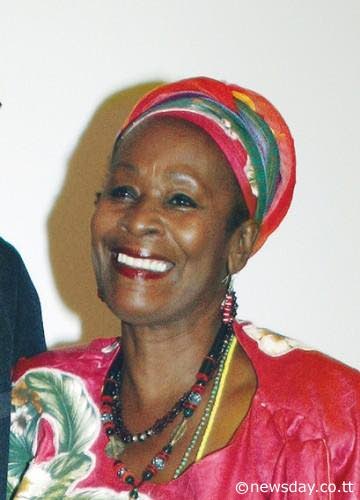Laventille, here we come

GUEST COLUMNEintou Pearl Springer
Laventille here we come
Oh Laventille, here we come
SO MY brother David sings. In this Carnival season, my mind turns towards the place that was the womb of our Carnival and of the magical instrument of spirit and resistance, forged out of discarded material, before recycling became fashionable and indeed necessary.
There has always been a struggle to survive as panman, as Laventillian. Always, from the days of Joe Talmana and the jamettes dem, putting a first-class cut-tail on Capt Baker, to the present time of eking out an existence in a society in which you must change your address to get any decent job.
It must be anguish to live in an area in which the magnificence of the views, mocks the almost unchanged infrastructure of centuries. In Kambule, as playwright, as I invoke the spirit of Joe Talmana, I say…
The barrack yards of Port of Spain
Still singing humanity’s bitter refrain.
From slavery Africans had won their freedom
But their living conditions
Remain inhumane
As the Egungun Pierrot, the Griot of the Kambule points towards the hills, none can dispute the truth of the poet’s lament.
But Laventille, here we come…again. The fires of warriorhood, of survival, lurk never too far below the surface. The violence, the gang warfare are exacerbated by the exploitation of poverty by the monied white-collar criminals.
As long ago as 1935 calypsonian Tiger sang:
If a man has money today
People wouldn’t say he have cocobay
You can commit murder
And get off free
And live in the Governor’s company
But if you are poor
They will tell you true
That a dog is better than you.
In Laventille, it has been recognised, as Chalkdust, Dr Liverpool reminds us, that ‘‘synonymous with the rise of the steelband was the rise of the village badjohn, who, as it were, represented the fighting spirit of his band or village. He appealed to the authorities by his uncouth and anti-social behaviour for improvements to his village‘s social conditions.”
The decades of rejection and neglect have unfortunately turned these energies inwards, like a cancerous growth spreading tentacles destructively throughout the community. The police, either caring and committed or corrupt and murderous like Burroughs, clearly, cannot be the answer.
So, if we coming to Laventille, what we coming with? It must be with a new, a different manifesto, one that will seek to achieve a transformation of both the human and physical environment.
Let me be clear: Laventille is not poor. The people are economically poor. The Carnival for which Laventille people fought in 1881 is now culturally appropriated and exploited to make a few rich. Costumes are imported from China. People pay for costumes with credit cards into foreign bank accounts.
Lithe, light-skinned bodies are separated from the masses by rope and burly black men. Plus ça change! Let us not forget the furore when Winston Peters, as Minister of Culture, tried to stop the unpatriotic, corbeauesque practice of the importation of costumes.
I have been to carnival in Miami and London, where seamstresses and artisans from TT were employed to make costumes and harvest an income at these diaspora events that our Carnival has spawned.
In East Dry River, there are no monuments to those who created this festival…the madmen, panmen, calypsonians. The African presence is given no visibility or recognition. But we have established a Chinatown...Thank goodness we now have the emancipation monument. But:
Gar feh lik me.
The Bajan gone ahead a we
They get rid ah Nelson,
While Columbus still dey wid we.
Editor's Note: This is the first of a two-part series, with the second half to be published in the Sunday Newsday.


Comments
"Laventille, here we come"